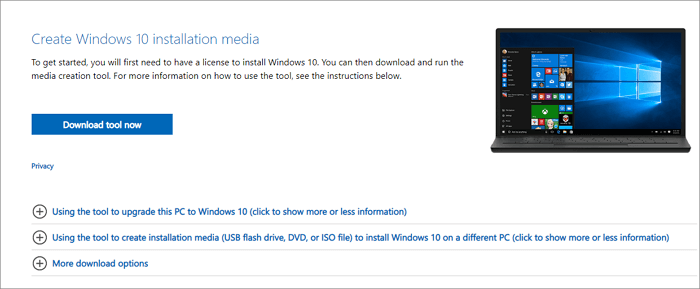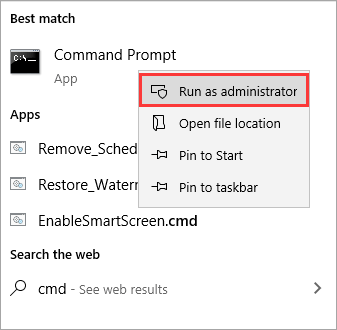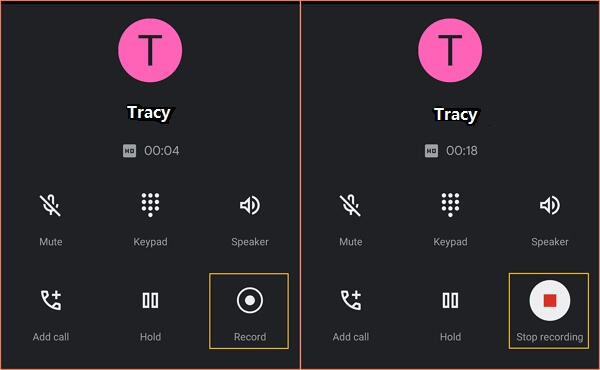-
![]() Fixed: Restart to Repair Drive Errors on Windows 10
Fixed: Restart to Repair Drive Errors on Windows 10 December 12,2025
December 12,2025 6 min read
6 min read -
![]()
-
![]() Zoom Meeting Disappeared for No Reason? Fix It and Recover Zoom Meetings Now
Zoom Meeting Disappeared for No Reason? Fix It and Recover Zoom Meetings Now December 12,2025
December 12,2025 6 min read
6 min read -
![]() Genshin Impact Size on Laptop/PS4/Mobile [All You Need to Know]
Genshin Impact Size on Laptop/PS4/Mobile [All You Need to Know] December 12,2025
December 12,2025 6 min read
6 min read -
![]() How to Fix External Hard Drive Takes Long Time to Open and Read
How to Fix External Hard Drive Takes Long Time to Open and Read December 12,2025
December 12,2025 6 min read
6 min read -
![]() RAW to NTFS Converter Software Free Download (for Windows Only. 100% FREE)
RAW to NTFS Converter Software Free Download (for Windows Only. 100% FREE) December 14,2025
December 14,2025 6 min read
6 min read -
![]() Error: Google Docs Didn't Save My Work | How to Recover Unsaved Changes to Google Docs
Error: Google Docs Didn't Save My Work | How to Recover Unsaved Changes to Google Docs December 12,2025
December 12,2025 6 min read
6 min read -
![]() How to Recover Permanently Deleted Photos from Hard Disk | 4 Ways
How to Recover Permanently Deleted Photos from Hard Disk | 4 Ways December 12,2025
December 12,2025 6 min read
6 min read -
![]() How to Recover Deleted Call Recordings on Android [2025 Guide]
How to Recover Deleted Call Recordings on Android [2025 Guide] December 12,2025
December 12,2025 6 min read
6 min read -
![]() Windows Cannot Find Ms-Settings: How to Fix the File System Error
Windows Cannot Find Ms-Settings: How to Fix the File System Error December 12,2025
December 12,2025 6 min read
6 min read
Page Table of Contents
Overview - How to Boot to Command Prompt in Windows 10
A Command Prompt is an entry point for typing computer commands. By typing commands at the window, you can perform tasks on your computer without using the Windows graphical interface. In fact, there are two ways to open Command Prompt in Windows 10. Check the table below to get quick navigation.
| Workable Solutions | Step-by-step Troubleshooting |
|---|---|
| 1-Windows 10 Can't Boot |
Fix 1. Boot to Windows 10 Command Prompt with Installation Media...Full steps Fix 2. Boot to Command Prompt Windows 10 from Advanced Startup Options...Full steps |
| 2-Windows 10 Can Boot |
Fix 1. Start Command Prompt Using Search...Full steps Fix 2. Open/Boot Windows 10 Command Prompt from the Settings...Full steps |
Part 1. How to Open Command Prompt If Windows 10 Can't Boot
If you can't boot into Windows 10 and repair the errors, you'll need to create an installation media or turn off the PC three times. Read on to get the detailed information.
Way 1. Boot to Windows 10 Command Prompt with Installation Media
If your computer fails to boot, you can open Command Prompt with Windows 10 Installation Media. With the help of a Windows 10 Media Creation Tool, you can enter BIOS even if your Windows 10 can't start.
Step 1. Create Windows 10 Installation Media
Requirements:
- A PC with a stable internet connection for the download.
- A USB flash drive with at least 8 GB of space or a blank DVD.
- When burning a DVD from an ISO file, if you're told the disc image file is too large, you'll need to use dual-layer (DL) DVD media.
Steps: Follow this guide to make a Windows 11/10 media creation tool.

Step 2. Boot into the BIOS in Windows 10
- Insert the installation media into your Windows 10 PC and boot the PC from it.
- Press F2, Del, Esc, or other required keys to enter BIOS.
- Access the "Boot" pane and move your USB drive to the top of the boot list.

Step 4. Boot to Windows 10 Setup Interface
- Press F10 to save your settings and exit the BIOS.
- Set the language, time, and keyboard, then click "Next".
- Click "Repair your computer" at the bottom left.

Step 5. Boot to Command Prompt in Windows 10
- Click "Troubleshoot > Advanced Options > Command Prompt"

Then, you will enter the Command Prompt to repair Windows 10 with command lines.
To repair Windows 10 with SFC:
- On the command window, type D: and press Enter to go to the C: drive of your computer.
- Tip
- Because your computer is started with bootable media, the System Reserved partition of your hard drive is temporarily marked as C: and therefore the C: drive that you see from within Windows 10 is marked as D: drive. This is a temporary modification.
- Type sfc /scannow and press Enter.
If you want to fix Windows 10 boot problems like repair MBR, type the commands below:
- bootrec /fixmbr
- bootrec /fixboot
- bootrec /rebuildbcd
Way 2. Boot to Command Prompt in Windows 10 from Advanced Startup Options
What if you start your PC, but you get a blue screen or the desktop is blank? You can fix your problem and open Command Prompt in Advanced Startup Options. Here are the steps:
Step 1. Enter the Windows 10 recovery environment.
Turn your computer on and off three times. While booting, make sure you turn off the computer when you see the Windows logo. After the third time, Windows 10 will boot into the diagnostics mode.
Step 2. Click "Advanced options > Troubleshoot > Advanced options > Command Prompt" when the recovery screen appears.

Then, the Command Prompt is immediately loaded, and you can start using it for whatever you need.
Part 2. How to Start Command Prompt If Windows 10 Can Boot
Things could be easier if your Windows computers or laptops are running well. You can search for Command Prompt or enter Command Prompt from Settings. Here are the steps in detail.
Fix 1. Start Command Prompt Using Search
This solution is the most recommended one for its easiness.
Step 1. Go to Start and type cmd into the search box.
Step 2. From the list, right-click Command Prompt and choose "Run as administrator".

You should enter into the Command Prompt window now.
Fix 2. Start Windows 10 Command Prompt from Settings
Step 1. Click "Start > Settings" to open the "Settings" Window. Next click "Update & Security", and choose "Recovery".

Step 2. Click "Restart now" under Advanced startup, and your Windows 10 computer will restart now.
Step 3. When you see the "Choose an option" screen, click "Troubleshoot > Advanced options".
Step 4. Click "Command Prompt". You should enter into the Command Prompt window now.

Extra Tip: How to Recover Command Prompt Deleted Files
When you use some cleanup commands like a clean command or format command, you lost data on your drive. These command lines delete files permanently without backup. What can you do to get back Command Prompt deleted files? The answer is using the best data recovery software - EaseUS Data Recovery Wizard. This EaseUS Data Recovery Wizard can recover formatted hard drive, using Command Prompt, or pressing Shift-Delete.
Download this all-in-one data recovery software and restore lost data from your PC or laptop.
Step 1. Run EaseUS Data Recovery Wizard. Choose the drive where you lost files and start scanning by clicking "Search for Lost Data". This software allows you to recover lost data from all devices, including HDD, SSD, USB drive, SD card, pen drive, camera, etc.

Step 2. Browse the full scan results. You can choose the file type you need by clicking on the file type filter. EaseUS data recovery software supports 1000+ file types like photos, videos, documents, emails, audio files, and many more.

Step 3. Select the files you want to preview. Click "Recover" and set a storage location or Cloud drive to save the recovered data.

Conclusion
This post has provided you with 4 ways to boot Windows 10 from Command Prompt. If your PC cannot boot, refer to Part 1. If your computer can start normally, refer to Part 2. Besides, If you have data loss problems, turn to EaseUS EaseUS Data Recovery Wizard for help.
Was this page helpful?
-
Brithny is a technology enthusiast, aiming to make readers' tech lives easy and enjoyable. She loves exploring new technologies and writing technical how-to tips. In her spare time, she loves sharing things about her game experience on Facebook or Twitter.…
-
Evan Galasso is a digital forensics and data recovery engineer with over 10 years of experience in the field. He presents opinions on the current state of storage media, reverse engineering of storage systems and firmware, and electro-mechanical systems of SSDs and HDDs.…

20+
Years of experience

160+
Countries and regions

72 Million+
Downloads

4.9 +
Trustpilot Score


Free Data
Recovery Software
Recover data up to 2GB for free!













